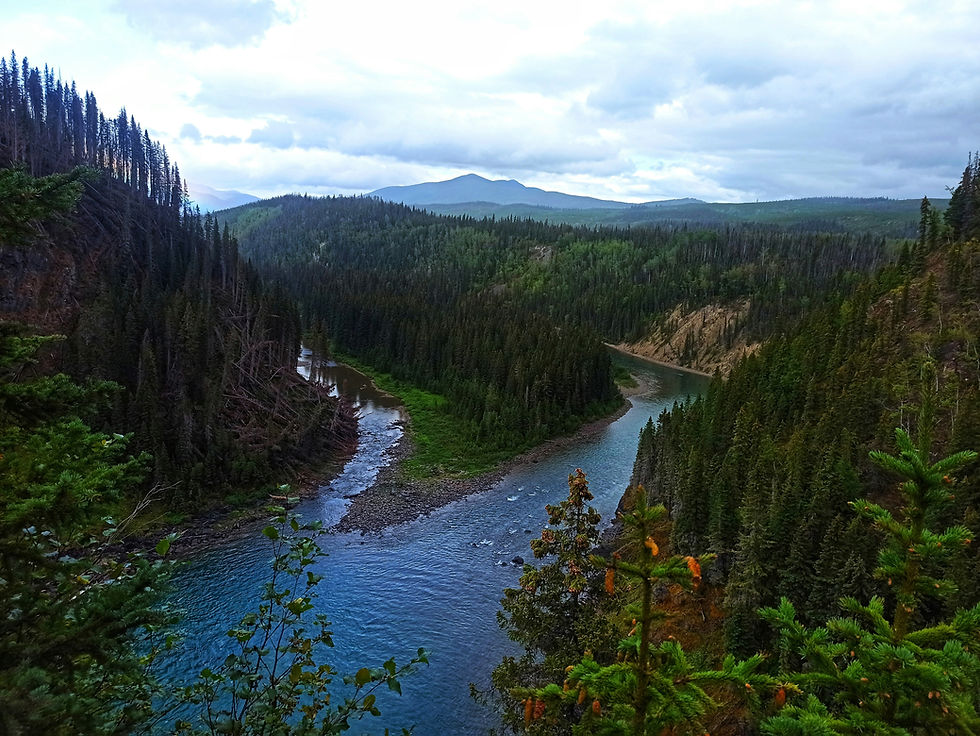Fossil Coast Geo Travel Guide Explores the Burgess Shales of British Columbia Canada
- Wayne Munday
- Nov 7, 2022
- 4 min read
Updated: Dec 19
The Burgess Shale of Yoho National Park, British Columbia, is one of the most important fossil localities on Earth, offering a remarkable window into marine life during the Middle Cambrian Epoch. Preserved within the Stephen Formation, its fossils capture extraordinary detail, including soft-bodied organisms rarely found elsewhere. First uncovered in 1909 by Charles Doolittle Walcott, the Burgess Shale transformed our understanding of the Cambrian Explosion and early animal evolution. Today, this internationally significant site, recognised by the IUGS as a global geological heritage location, sits within the dramatic landscapes of the Canadian Rockies. From trilobites to enigmatic creatures like Opabinia, the Burgess Shale remains essential to palaeontology and geotourism as a destination to explore.

Sit back with a glass of Fossil Coast Lime Stone London Dry Gin and enjoy this excursion high up into the Canadian Rockies. This Burgess Shale is a key global reference for early Cambrian life along with other such places as the Chengjiang fossil site of Yunnan Province in China.

The Burgess Shale is among the “First 100 Geological Heritage Sites” designated by the International Union of Geological Sciences (IUGS in 2022.

Yoho National Park is part of a range of national parks sharing a common border making up the UNESCO Canadian Rocky Mountains World Heritage Site.
This also includes the national parks of Banff, Jasper, and Kootenay, as well as the Mount Robson, Mount Assiniboine, and Hamber provincial parks.
This is an area of over 24,000 Km2 of mountain landscape with glaciers, lakes, waterfalls, canyons, and limestone caves. The Burgess Shales are named after the nearby Mount Burgess found high up on the western slopes of the Canadian Rocky Mountains near the town of Field, British Columbia, and less than an hour's drive from Banff.
It was Charles Doolittle Walcott who was inspired in 1909 by the stories of "stone bugs", or as we now know them Trilobites, found by Canadian Pacific Railway (CPR) workers. They were excavating the Kicking Horse Pass region of Mount Stephen during the building of Canada's coast-to-coast railway considered to be one of Canada's greatest feats of engineering.

If you decide to visit Yoho National Park you should know that hiking either the longer 22Km route to Walcott Quarry, which cannot be accessed without an authorised guide, located on Mount Field, or the shorter 7km route to the Trilobite Fossil Bed of Mount Stephen are generally considered challenging.
The rocky terrain, steepness, and switchbacks along the way plus the lower oxygen levels at this altitude above sea level is a test of fitness. There are also a number of other hiking trails in the Yoho National Park.
Guided walks to the Walcott Quarry, Mount Stephen, and Stanley Glacier can be booked with either Parks Canada or the Burgess Shale Geoscience Foundation.

At the time Charles Walcott was the Secretary of the Smithsonian Institution now reputedly the world’s largest museum complex. Founded in 1846 with funds from the Englishman James Smithson (1765–1829) who according to his wishes “under the name of the Smithsonian Institution, an establishment for the increase and diffusion of knowledge,” has grown to include 21 Museums, a Zoo and nowadays the Smithsonian houses approximately 155 million artifacts, specimens, and 2.2 million library volumes.
The National Fossil Collection now contains over 40 million fossil specimens including 65,000 Burgess Shale fossils collected by Walcott and others. These collectively make up the national reference collection for paleontological research undertaken by the United States Geological Survey since the late 1800s.
The Burgess Shale fossils are among the permanent collections at the National Museum of Natural History in Washington, D.C. Burgess Shale collections and projects are also on display at the Royal Ontario Museum and The Royal Tyrrell Museum of Palaeontology.
The Burgess Shale is an interbedded shale and limestone sedimentary rock known as the Stephen Formation. This formation is described as a Lagerstätte of exceptionally well-preserved Cambrian marine organisms originating from around the time of the Cambrian Explosion.

The Stephen Formation is characterised as a clastic sequence of thinly bedded mudstones, claystone, and carbonates up to 300m in thickness.
On closer inspection, they are composed of consolidated sediments formed by the accumulation of platform and basinal facies or rock fragments with characteristics that indicate that they have been transported from elsewhere.
The nature of this formation provides a logical reason as to why this assemblage of Burgess Shale fossils survived in such a remarkable state of preservation.
These Cambrian animals were buried by a series of rapid but non-traumatic mudflows or landslides. They were almost instantaneously smothered without causing them any traumatic damage to their body forms below the surface layers of sediment.

It was a time of significant diversity in early arthropods as well the enigmatic anomalocaridids and Hallucigenia. Additionally, the community includes sponges, ctenophores, cnidarians, echinoderms, hemichordates, chordates, chaetognaths, molluscs, annelids, priapulidsand arthropods as well as cyanobacteria and algae.
Some of the species such as the Opabinia differ markedly from those that live in the ocean today. Stephen J. Gould, an American palaeontologist and, evolutionary biologist in his 1989 book, Wonderful Life, described some of these organisms as simply a ‘weird wonder’.
Burgess Shale Fossils, Yoho National Park of British Columbia, Canada














